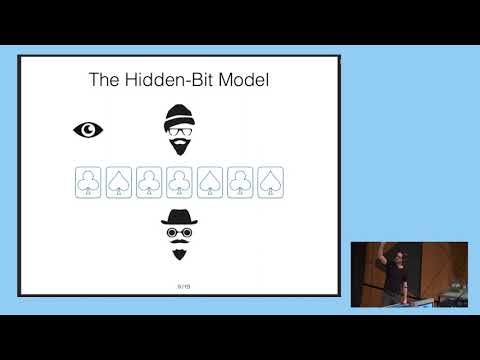CryptoDB
Designated-Verifier Pseudorandom Generators, and Their Applications
| Authors: | |
|---|---|
| Download: |
|
| Abstract: | We provide a generic construction of non-interactive zero-knowledge (NIZK) schemes. Our construction is a refinement of Dwork and Naor’s (FOCS 2000) implementation of the hidden bits model using verifiable pseudorandom generators (VPRGs). Our refinement simplifies their construction and relaxes the necessary assumptions considerably.As a result of this conceptual improvement, we obtain interesting new instantiations:A designated-verifier NIZK (with unbounded soundness) based on the computational Diffie-Hellman (CDH) problem. If a pairing is available, this NIZK becomes publicly verifiable. This constitutes the first fully secure CDH-based designated-verifier NIZKs (and more generally, the first fully secure designated-verifier NIZK from a non-generic assumption which does not already imply publicly-verifiable NIZKs), and it answers an open problem recently raised by Kim and Wu (CRYPTO 2018).A NIZK based on the learning with errors (LWE) assumption, and assuming a non-interactive witness-indistinguishable (NIWI) proof system for bounded distance decoding (BDD). This simplifies and improves upon a recent NIZK from LWE that assumes a NIZK for BDD (Rothblum et al., PKC 2019). |
Video from EUROCRYPT 2019
BibTeX
@article{eurocrypt-2019-29372,
title={Designated-Verifier Pseudorandom Generators, and Their Applications},
booktitle={Advances in Cryptology – EUROCRYPT 2019},
series={Advances in Cryptology – EUROCRYPT 2019},
publisher={Springer},
volume={11477},
pages={562-592},
doi={10.1007/978-3-030-17656-3_20},
author={Geoffroy Couteau and Dennis Hofheinz},
year=2019
}

